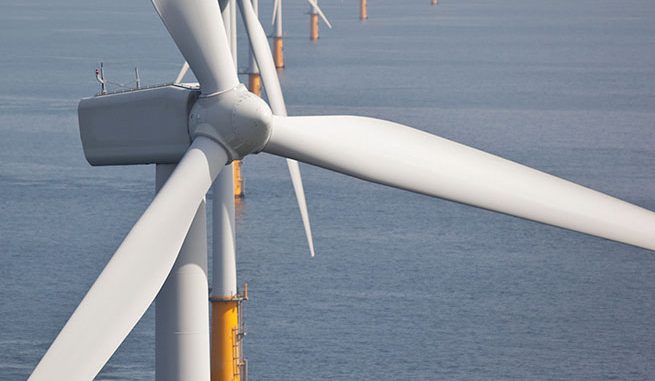
The past decade has witnessed a massive global movement towards offshore wind farms as countries expand their renewable energy capacities to meet their power requirements. As compared to onshore wind installations, offshore wind farms get stronger and more consistent winds leading to greater energy generation, less sound pollution, and no land acquisition issues. In terms of turbines, offshore wind turbines are much larger with higher capacities than their onshore counterparts. They are designed to tap the strong winds and capture more wind energy. Typical onshore wind turbines available worldwide are in the range of 3-4 MW. The average capacity of offshore wind turbines has increased over the years to 9-10 MW, while some turbines with capacities as high as 14 MW are also commercially available.
With the increasing capacity of wind turbines, their size in terms of rotors and blades has also increased significantly. Larger rotors and blades can cover a wider area and harness more wind energy. Moreover, longer blades can tap wind speeds at higher altitudes. The size and scale of offshore wind turbines is enormous, with blades of 80-100 metres and rotor diameters of around 200 metres. In May 2020, German consultancy Aerovide (formerly aerodyn Energiesysteme GmbH) announced that it was working on a 111 metre rotor blade for 11-15 MW offshore wind turbines. The first prototypes are expected in 2022-23. These blades will be among the longest in the world. In April 2021, GE Renewable Energy announced its plans to set up a new manufacturing facility in Teesside, England, to produce 107 metre offshore wind turbine blades. These wind turbine blades are a key component of GE’s 12-14 MW Haliade-X offshore wind turbines.
Key considerations
Such large-sized wind turbines bring with them logistical, installation, and O&M challenges, exacerbated due to access issues especially if the offshore wind project is in deep waters. Further, as compared to onshore wind turbines, offshore wind turbine blades need to withstand stronger wind forces in a far more demanding environment characterised by salty sea air, rain, hail, ocean spray and lightning strikes. Longer and lighter units can help address the logistical challenges, while proper design and engineering will ensure their longevity and reliability. Wind turbine blades should be designed to last for a minimum of 20 years and withstand fatigue damage as well as damage due to varying wind loads and other environmental conditions.
Weight savings is a key criterion in offshore wind projects as the weight of rotor blades increases progressively with the increasing blade length. With the adoption of more accurate design methods and use of stronger and lighter materials, blade weight can be optimised. Wind turbine rotor blades are traditionally made of polymer matrix composite materials, with a few parts glued together. Thus, it is important to ensure uniformity during the production stage.
In the case of offshore wind projects, accessing the turbine site frequently for manual inspection is not only difficult but also costly. Thus, sensors should be built in the blades to detect any potential damage and avoid project downtime. Just collecting data through sensors is not enough, appropriate modelling and analysis tools should also be used to assess the extent of faults and damage, and the need for repair. Further, advanced software with remote surveillance should be used to predict faults in different scenarios so that preventive action can be taken, and costly repairs avoided.
Outlook
Offshore wind has long been considered an attractive opportunity in India, especially in Gujarat and Tamil Nadu, which have an estimated offshore wind potential of 71 GW. While earlier efforts have not yielded the desired results, the global decline in prices and the slowdown in domestic onshore wind capacity additions due to land, transmission and other concerns have led to a renewed interest in this space. Thus, in November 2020, the government announced its plan to develop an offshore wind auction framework and secure viability gap funding of Euro 800 million from stakeholders for the first offshore wind project.
Going forward, India’s upcoming offshore wind market will have to overcome the challenge of price sensitivity, which has led to many unsuccessful bids in the onshore wind space. Further, the focus should be on project quality and reliability so that the assets last for 25 years. The manufacturing industry will have to work closely with developers to identify possible challenges and find their solutions so that the design, logistics and installation of rotors and blades can be made more efficient and effective.
By Khushboo Goyal



